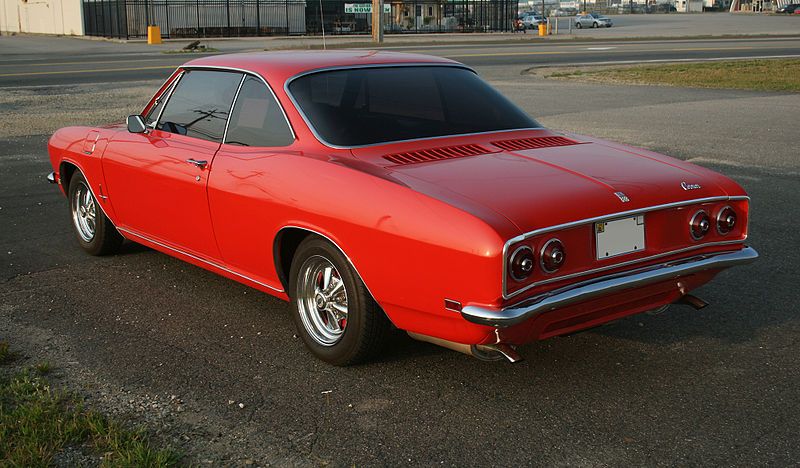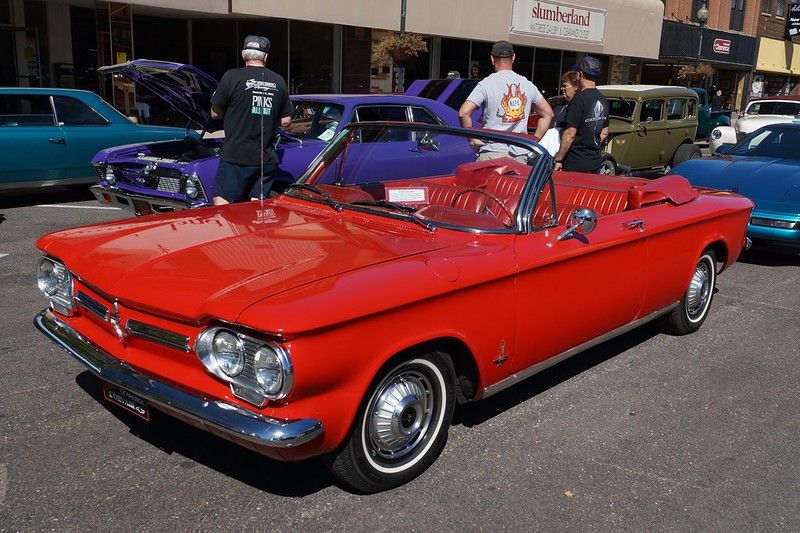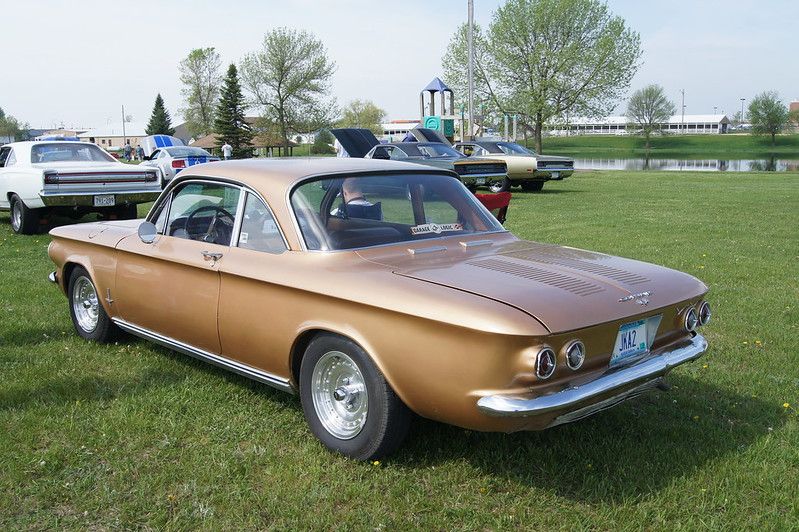Chevrolet has a reputation for producing much more affordable cars than their competitors, and have done so over recent years by leaning heavily into the large General Motors parts bin. The C8 Corvette firmly set its sights on the greatest vehicles to come out of Maranello by opting for a mid-engine layout. The previous C7 had stepped up the car's level of luxury to compete with grand tourers near twice the price. With plenty of performance and a blue-collar worker approved price tag, Chevrolet offers excellent value for money. However, there are some disparaging remarks with regard to the automotive giant's cars, with them being for the “poor man”, implying they are of lower quality.
The New York Times say that "Collecting and rebuilding Corvairs is not a rich man's hobby" going so far as to quote the members of the Corvair Owner's Club as saying that “''This is the poor man's answer to the Porsche 911”. In production from 1960 to 1969, the car embodies the optimistic car culture of the 1960s it saw production over two generations. A contemporary to the Porsche 356 the first car was a compact rear-wheel-drive, rear-engined sports car. The second generation came to market for the 1965 model year and with a more stylish and less muscle car-like body, the model is a clear response to the classic 911 to have come from Stuttgart.
General Motors' Most European Car
Jay Leno echoes the sentiment that the Corvair was a “poor man's Porsche.” His critically acclaimed YouTube channel Jay Leno's Garage showcased the gear head's Chevy Corvair Yenko Stinger. After discussing Lenko, proclaiming the tuner to be Chevy's equivalent to Shelby. The stage two cars produce 110 horsepower and in some tunes like Yenko's stage, four produces 240 horsepower. It is important to remember that the car was lightweight with a curb weight of 2,414 pounds and in the stripped out Yenko even less. Leno refers to the car's six cylinders air-cooled engine with four carburettors as “the most European car General Motors ever produced.”
This statement may at first seem hyperbolic but with this engine also being flat, as opposed to an in-line or V set up it is certainly true. Further, proving the validity behind Leno's statement, is the car's optional turbocharger, an incredibly forward-looking technology. A turbo could come with the car from the factory, making the model one of the first production cars to have a turbo from the factory, beating Porsche by a full decade as their 911 Turbo launched in 1975.
Was it More Than A Porsche Copy?
By calling the Corvair a “poor man's Porsche,” it tarnishes the car's legacy. A unique part of General Motors' history, both Corvair generations stand apart from the rest of the company's lineup. The Corvette is larger and at the time of the Corvair's release the embodiment of 1950s car design, a reputation the model was unable to shake with the C2 Corvette, which, although a design icon still exists in the wake of its predecessor.
Sitting beneath the Corvette, the Corvair pioneered the proliferation of cheaper sports cars instead of furthering the pony car market. This junior model didn't have any corners cut, with the second generation receiving fully independent rear suspension to avoid the dangerous handling of the original. This section of the market is one that Porsche frequently turn their attention to.
The 986 Boxster and eventual Cayman are obvious examples of this, undercutting the price of the upmarket 911. But decades earlier, Porsche first produced a model to satisfy this segment, launching the V8 powered 928. A true “poor man's Porsche”, with an engine layout that was more palatable to the American market and engines with displacements north of 4.5 liters. Bearing this in mind, the Corvair may appear to be in the 911's shadow but with a more traditionally American three-box design, the Corvair is similar to a European 911 but only because it shares the same forward-looking and incredibly engaging layout. The engineering might of General Motors was simply looking for their next success.
A Valuable Classic
It's no surprise then that the Corvair is a valuable car. Over the previous decade, classic car prices have soared, with the Classic 930 911 leading the charge into truly ludicrous numbers along with the Jaguar E-types and the special Mustangs like the Boss 302. With a limited supply of cars and increasing demand due to numerous factors like new regulations and nostalgia, very few classics have escaped this price rise. The Corvair is no exception, especially with its unique place within General Motor's history.
In 2020 according to Hagerty, the second-generation cars are selling for more than their insured value and this inflated figure is growing consistently. Hagerty find that whilst the least desirable and common Corvairs sell from $4,600 with the most expensive being the Yenko tuned models like Leno's which are moving hands for $36,000. For perspective, this price is around a third the listed price of most C1 Corvettes or 930 911s. Whilst it's unlikely that many classic cars will reach the dizzying heights that these models sell for. The Corvair's increasing price is a product of the increasing respect for the more niche model.




